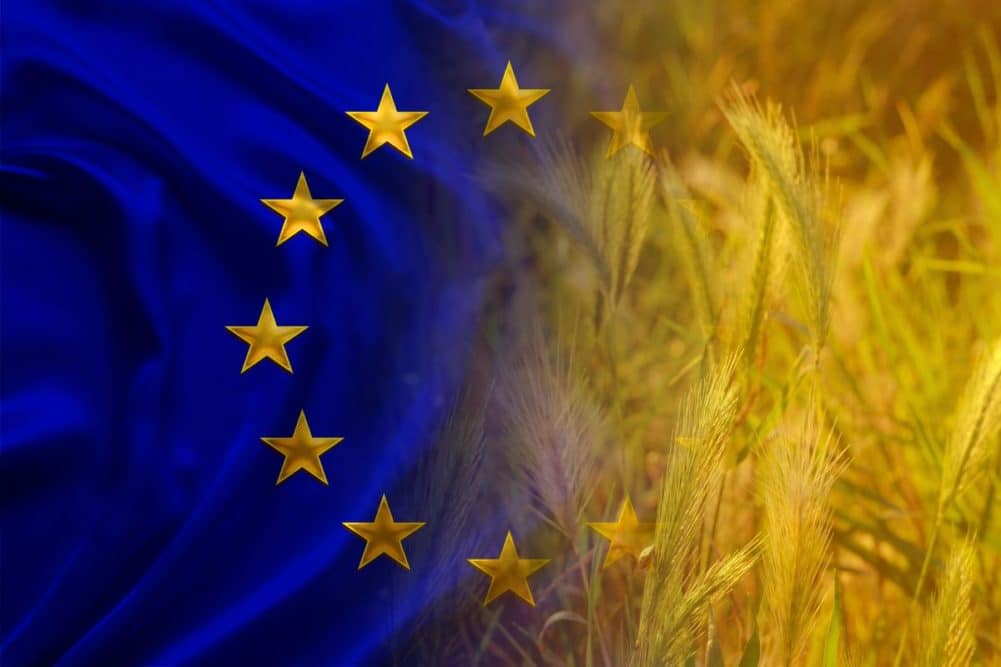
Intensifying protests have left the Ukrainian-European Union (EU) border nearly paralyzed, jeopardizing one of the export lifelines of the reeling Ukrainian economy. However, the rally backed by farmers all over the bloc is increasingly seen as an attempt to revolt against the EU’s environmental policy.
Footage of grain spilled from a truck near the Shehyni-Medyka checkpoint on the Ukraine-Poland border has quickly become viral on social media networks, becoming a symbol of the growing dissent on the economic and, consequently, political front.
Politicians on both sides of the conflict now express fears that the dispute over the Ukrainian grain imports widely covered in media could weigh heavily on the European determination to keep supporting Ukraine in its attempts to resist the invading Russian forces.
“Ukrainian grain on the asphalt is not just a few dramatic shots,” said Ukrainian President Volodymyr Zelensky. “This is a testament to how emotions can become dangerous.”
He warned that the border blockade leads to an “erosion of solidarity” between Ukraine and its Western allies.
European farmers hope the protests will help yield the desired results, though the initiative lacks a unified stance.
In Poland, the agricultural producers emphasize unequal competition with Ukraine, while in France, farmers protest against food imports from non-EU countries in general. However, the common goal is believed to draw the attention of EU decision-makers, who, according to farmers, ignored the sector’s opinion on the revolutionary Green Deal.
Despite a rise in yields in 2023, European grain farmers are seeing their margins dwindle, primarily due to a price drop over the previous several months.
In 2022, European grain prices rallied upward, stemming from fears that Ukrainian grain would not be available on the global market as Russian forces blocked its main export arteries. However, these fears largely subsided during 2023, as did some key agricultural commodities prices.
As a result, wheat in 2024 has sold for half the price it did last year, and farmers participating in the protests are alarmed. The turbulent market conditions occur against a backdrop of EU green reforms that were due to start in 2024 and included, among other things, a cut in fertilizer and pesticide use, which would have been playing heavily on farmers’ minds, said Michael Lee, director of Green Square Agro Consultancy working in the Black Sea region and Eastern Europe.
Farmers’ dissatisfaction has emerged as protests across Europe, including blocking the border with Ukraine, as they look for someone to blame,” Lee explained.
The Farm complements the Green Deal to Fork Strategy, under which the European lawmakers seek a 50% reduction in pesticides, a 20% reduction in fertilizers, and a 50% reduction in antimicrobials for farmed animals in the coming years. In addition, 25% of agricultural land is due to be used for organic farming, and 10% of the land has structural elements with high biodiversity.
“These ambitious targets and objectives will have an impact on how EU farmers will be able to operate, and they will have to adapt to access subsidies,” Lee indicated.
Access to state aid remains vital for European farmers. Agriculture is one of the EU’s main expenses, absorbing €60 billion a year, almost equal to the EU defence spending before Russia invaded Ukraine.
The Ukrainian side admits that the fears expressed by farmers in Eastern Europe over the fierce competition with cheap imported grain are not groundless. Roman Matys, an independent Ukrainian economist, indicated that some ecological requirements European farmers must follow are not applied to Ukrainian imports.
“Our agricultural producers can use cheaper pesticides that have long been banned in the EU,” Matys noted.
Nevertheless, the withdrawal of the preferential trade regime, proposed by the European Commission and due to come into force on June 6, could undermine one of the pillars of the war-torn Ukrainian economy.
Ukrainian Agribusiness Club UCAB reported that in 2023, Ukraine’s exports of agricultural and food products totalled $21.9 billion and accounted for 61% of the country’s total exports of goods, compared to $23.4 billion and 53% of the country’s total exports of goods in 2022. At the same time, the EU’s share in total exports of agri-food products from Ukraine in 2023 was 56.6%, versus 55.1% in 2022, or $12.4 billion, versus $12.9 billion in 2022.
UCAB claimed that “Ukraine may face a macroeconomic crisis and currency devaluation if international financial support does not materialize.”
